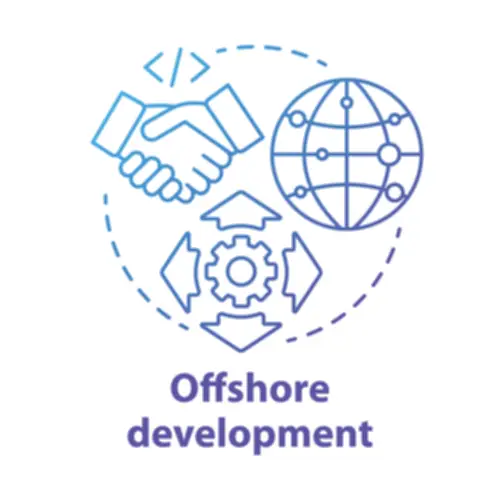Probability scores in a qualitative risk matrix represent the likelihood of a hazard occurring, ranging from low to excessive likelihood. For instance, high likelihood ratings embody hazards which are prone to happen annually or more. The primary qualitative methodology uses a danger matrix, such because the one shown in Table 2, to determine the risk ranking. The table reveals the relationship between probability and severity and how a danger rating may be decided. The threat score is calculated based on the chance and potential influence of a hazard. For instance, a hazard with a excessive chance of occurring and a high potential influence would receive the next threat rating.
- The surroundings by which the organisation operates is dynamic, with new dangers rising and present dangers evolving.
- By focusing on the highest risks, you can profit your total enterprise strategy.
- Finally, it’s best for an organization to have the flexibility to regulate the scale and design of its danger matrix as wanted.
- In practice, this method is used with out precision, resulting in significant misunderstandings.
- The level of documentation or document keeping will rely upon the extent of threat involved, legislated requirements, and necessities of any management systems which may be in place.
- Lastly, reputational dangers are people who arise from unfavorable publicity or damage to the organization’s brand or image.
The rankings depend upon the design of the risk matrix itself, similar to the dimensions used. Asset loss, together with injury or destruction of firm property, is another widespread internal danger. This can be because of varied causes, corresponding to union strikes or different unforeseen occasions. You can additional customise the danger Software Сonfiguration Management ranges by offering your own naming system and assigning a color-code to every level, ranging from blue on the low finish to red on the excessive finish. The threat levels also characterize a simplified ISO equivalent (and are non-compliant with ISO 31000.
High-risk investments, similar to shares, may provide higher potential returns but additionally come with a better likelihood of losses. Conversely, low-risk investments, corresponding to bonds, may provide lower returns but with larger stability. Our danger levels are categorized as Low, Medium, and High, with distinct definitions to help assess potential threats. To understand the specifics of every stage, refer to table three for our danger stage definitions. Straightforward Prioritization is a must-have for any enterprise looking to manage dangers successfully.
Atlassian Group Occasions

You can even use a threat matrix calculator to automate the method and get fast insights and actionable outcomes. Low-risk actions, corresponding to routine upkeep, have a comparatively low impression on the organization if something goes incorrect. Use the examples beneath to discover out which danger classification is acceptable for a selected sort of data. When combined knowledge falls into multiple threat categories, use the highest danger classification across all.
Develop Mitigation Methods
They help people and organizations make informed decisions, prioritize efforts, allocate resources successfully, and develop methods to mitigate or handle dangers. In project management, threat ranges help teams establish and mitigate potential threats to project success. By assessing the danger stage of different project actions, groups can prioritize efforts, allocate assets, and develop contingency plans to handle risks. It includes evaluating the probability and potential impression of each recognized threat. Most organizations use a predefined scale to evaluate severity, with widespread scales including a 3-part scale (High, Moderate/Medium, Low) or a 5×5 matrix (extremely low-risk to extraordinarily high-risk).

Moreover, the effectiveness of an organization’s threat administration strategy and processes also can influence threat ranges. A well-designed and applied threat administration framework might help to identify and mitigate risks extra effectively, lowering general threat levels. On the other hand, a poorly designed or applied framework can lead to elevated risk ranges and potential adverse penalties for the group.
Secondly, it helps organizations make more informed selections about which risks to avoid, accept, or mitigate. Lastly, it helps improve organizational resilience and adaptableness in the face of potential risks. Web-based danger matrices can mechanically calculate a hazard’s risk after you choose its likelihood and severity, saving you time.

Organizations can use expertise to improve the effectivity and effectiveness of their danger management methods. For instance, they will use danger management software to automate threat https://www.globalcloudteam.com/ assessment, streamline data assortment, and enhance data evaluation. The chance of occurrence of these risks is low, and the potential impact on enterprise activities is also low. These dangers ought to be monitored, but don’t typically require a big amount of attention or assets to handle. Firstly, it helps organizations better understand the potential dangers they face and how to tackle them.
You can create a threat scale with up to 10 danger levels, allowing for a excessive level of granularity in your danger assessment. By understanding the completely different risk levels, you’ll be able to develop methods to mitigate or manage them, corresponding to diversifying your investments or implementing a catastrophe restoration plan. The first step in figuring out risk ranges is to identify the potential dangers that would impact your small business, corresponding to market fluctuations, regulatory adjustments, or supply chain disruptions. A danger assessment matrix might help streamline the method and make outcomes easier to understand. This software can outline forms of risk, identify relevant enterprise property, and determine risk levels definitions their criticality.
This could be carried out by conducting regular danger assessments and incorporating suggestions from stakeholders. Dangers beneath this class are those with a excessive probability of occurrence and a big potential influence on the organization’s enterprise actions. These risks pose significant threats to the organization and require instant consideration and resources to deal with. Furthermore, efficient risk management also can assist organizations save prices in the lengthy term. By identifying and addressing potential dangers early on, organizations can keep away from pricey damages and losses which will happen if the dangers are left unaddressed. Moreover, having a robust danger management plan in place can also help organizations adjust to legal and regulatory requirements, which might help keep away from authorized penalties and reputational damage.